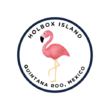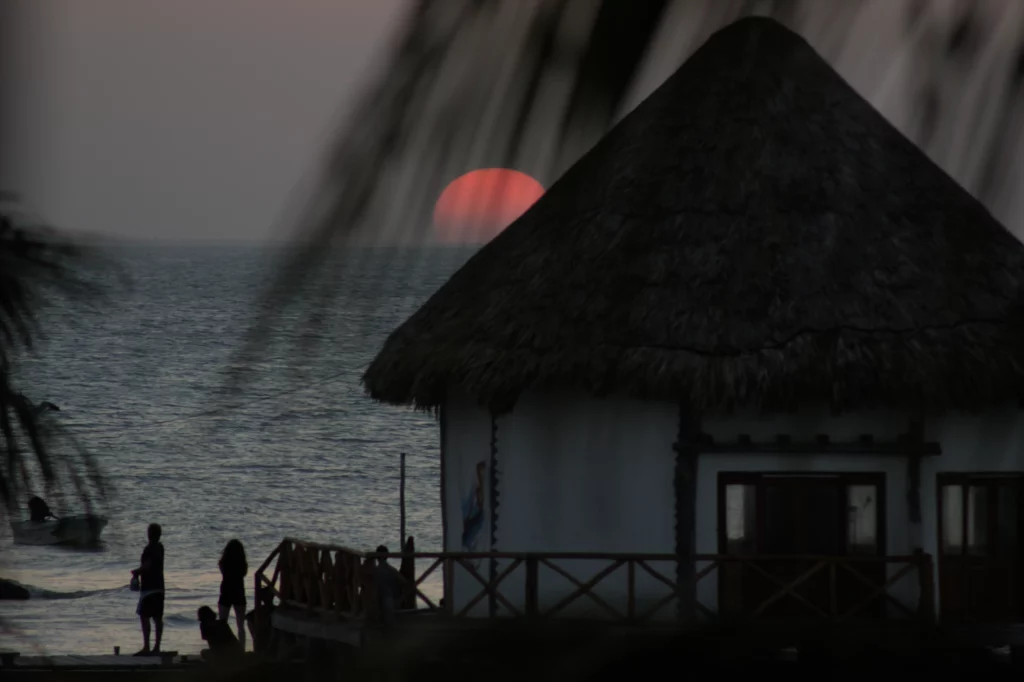
Best time to visit Holbox
Are you looking for the best time to visit Holbox Island? Nestled off the northern coast of the Yucatán Peninsula in Mexico, Holbox Island stands as a tranquil oasis in the Caribbean Sea. With its powder-white beaches, crystalline waters, and vibrant local culture, the island has become a sought-after destination for travelers seeking respite from the bustle of everyday life. Whether you’re yearning for a serene escape, an adventure-filled getaway, or a blend of both, Holbox Island offers a slice of paradise that caters to diverse preferences year-round.
What is the best time to visit Holbox?
Embarking on a journey to Holbox Island is a venture into a realm of choices, each season offering its own distinctive allure and treasures. The island, like a chameleon, transforms to cater to every traveller’s whim, and it’s within this tapestry of climate and ambiance that your adventure unfolds.
For those whose travel dates are etched into the calendar by work or family commitments, the festivities of Christmas, the vibrancy of Easter, or the early days of summer beckon. However, it’s important to note that these times also usher in a vibrant influx of fellow travelers, which can lead to a notable rise in flight and accommodation costs.
This trend holds particularly true for approximately three weeks spanning the weeks before Christmas Eve until after the Three Kings holiday. Similarly, the enchanting pulse of Easter on Holbox, specifically in March or April depending on holiday placements, comes with heightened excitement and, correspondingly, inflated prices. The embrace of summer vacations, spanning from early July to the tail end of August, also joins this realm of premium pricing.
For those fortunate enough to wield the liberty of choosing their travel dates, the months of March and April, whether prior to or following Easter, offer an exquisite fusion of serene climate and tranquil ambiance. This stretch of time sets the stage for relaxation and rejuvenation, as the island whispers tales of leisure against a backdrop of temperate days.
Should the prospect of swimming alongside majestic whale sharks awaken your adventurous spirit, mark the calendar for the tail end of May, or even better, the dawn of June through mid-September. During these months, the placid giants of the sea, the whale sharks, make their presence known, feasting upon the plankton-rich waters. To dive deeper into this awe-inspiring experience, the Holbox activities page holds insights into the world of whale shark tours.
For those yearning for a cooler and quieter interlude, with the exception of the bustling Christmas season, the months of December, January, and February stand as befitting choices. During this period, Holbox’s charm takes on a more subdued yet equally captivating demeanor, extending an invitation to savor its tranquil elegance.
Weather and climate in Holbox Island
The climatic conditions in this particular region of Mexico can be conveniently divided into two primary seasons: the dry season and the rainy season, often accompanied by the hurricane season.
Dry Season (November to April)
During the dry season, the weather in Holbox is characterized by pleasant conditions, making it a popular time for visitors. Here’s more information about this season:
- Temperature: The temperatures during the dry season are generally mild and comfortable. Daytime temperatures typically range from the mid-70s to mid-80s Fahrenheit (24-30°C), and nights are cooler.
- Humidity: Humidity levels are lower during this period, making the weather more comfortable for outdoor activities.
- Rainfall: Rainfall is minimal during the dry season. You can expect clear skies and minimal chances of rain, creating ideal conditions for beach activities, swimming, and outdoor exploration.
Best Time to Visit during the Dry Season: The best time to visit Holbox during the dry season is from November to February. During these months, you can enjoy the most pleasant weather with mild temperatures and minimal rainfall. The island is less crowded compared to the peak holiday season in December.
Rainy Season (May to October)
The rainy season in Holbox brings warmer temperatures and higher humidity levels, along with increased chances of rain and occasional storms. Here’s what you can expect during this period:
- Temperature: Temperatures are warmer compared to the dry season, with daytime highs ranging from the mid-80s to low 90s Fahrenheit (29-33°C). Nights remain relatively warm.
- Humidity: Humidity levels are higher during the rainy season, which can make the weather feel hotter. Be prepared for the sticky and humid conditions characteristic of tropical climates.
- Rainfall: This is the period with the highest amount of rainfall, especially in the peak months of June, July, and August. While rain showers are common, they are often short-lived and followed by sunshine.
Best Time to Visit during the Rainy Season: If you’re looking for a quieter and more budget-friendly experience, visiting Holbox during the rainy season can be a good option. The months of May and October, which bookend the peak rainy period, might offer a balance between fewer crowds and acceptable weather conditions.
Hurricane Season
Hurricane season in the Atlantic runs from June 1 to November 30, with the highest likelihood of hurricanes occurring between August and October. The Yucatán Peninsula, including Holbox, can be susceptible to tropical storms and hurricanes during this period.
Best Time to Avoid Hurricanes: To minimize the risk of encountering hurricanes or extreme weather, it’s recommended to avoid visiting Holbox during the peak of hurricane season, especially from August to October. If you do plan to visit during this time, it’s essential to monitor weather forecasts and heed any travel advisories.
Whale Shark Season in Holbox Island
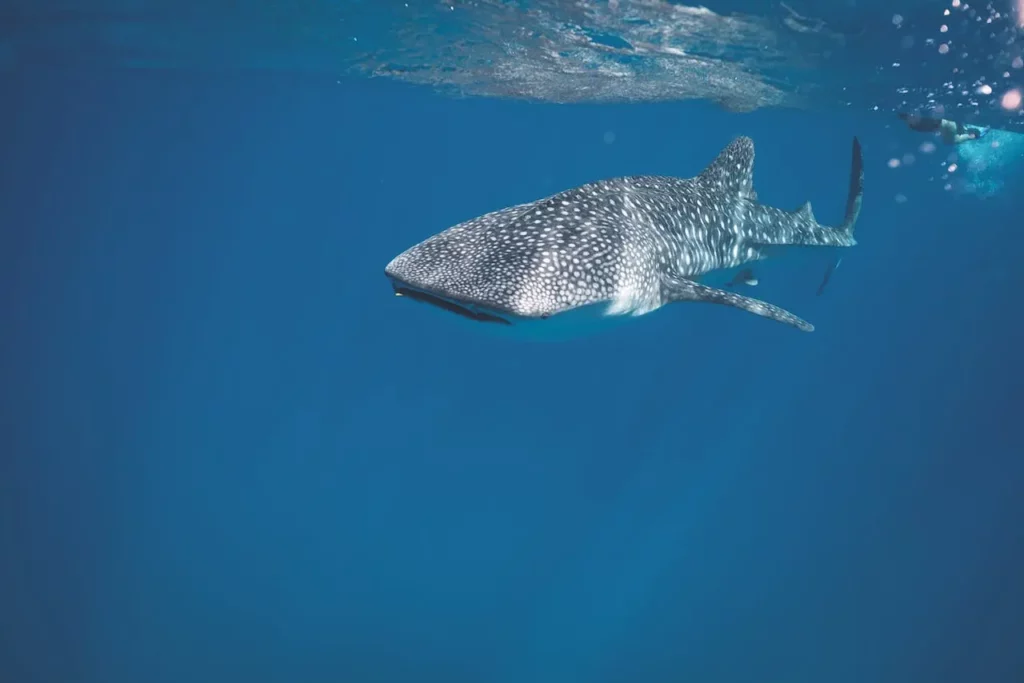
The whale shark season in Holbox is a fascinating and unique phenomenon that attracts many visitors to the island. Whale sharks, despite their name, are not whales but rather the world’s largest species of sharks, known for their docile nature and enormous size. They are filter-feeding animals, primarily feeding on plankton and other small organisms.
Here’s more information about the whale shark season in Holbox:
Timing: The whale shark season in Holbox typically occurs from June to September, with the peak months being July and August. During this time, the waters around Holbox become a hotspot for these magnificent creatures.
Whale Shark Tours: One of the main attractions of visiting Holbox during the whale shark season is the opportunity to participate in guided whale shark tours. These tours allow visitors to swim and snorkel alongside these gentle giants in their natural habitat.
Migration: The whale sharks gather around the Yucatán Peninsula to feed on the abundant plankton that blooms in the warm waters during this time of year. The exact reasons for their migration and congregation in this area are still being studied, but it’s believed to be related to their feeding patterns.
Swimming with Whale Sharks: The tours are designed to be eco-friendly and respectful of the animals’ well-being. Visitors are usually required to maintain a safe distance from the whale sharks to avoid disturbing them. Swimmers are instructed to stay at least several meters away and avoid touching the animals or using sunscreen that could harm the marine ecosystem.
Experience: Swimming with whale sharks is an awe-inspiring experience. These massive creatures can reach lengths of up to 40 feet or more, and being in the water with them gives you a sense of their sheer size and grace. Despite their size, whale sharks are not considered a threat to humans.
Conservation: The increased interest in whale shark tourism has raised concerns about the potential impact on the animals and their ecosystem. Responsible tour operators follow guidelines to minimize disturbances and protect the environment. It’s important to choose operators who prioritize the well-being of the whale sharks and their habitat.
Permits and Regulations: To ensure sustainable tourism, the Mexican government enforces regulations and issues permits for whale shark tours. These regulations include limits on the number of boats and swimmers allowed near the whale sharks at any given time.
Bird Watching season

Bird watching, also known as birding, is a popular outdoor activity that involves observing and identifying various bird species in their natural habitats. Holbox, with its diverse ecosystem, is a fantastic destination for bird enthusiasts. Here’s more information about bird watching on the island:
Diverse Bird Species: Holbox is home to a wide range of bird species, making it a paradise for bird watchers. The island’s varied habitats, including mangroves, beaches, wetlands, and forests, attract both resident and migratory birds. You can spot a mix of shorebirds, wading birds, waterfowl, songbirds, raptors, and more.
Migration Patterns: Holbox serves as a crucial stopover point for many migratory birds traveling between North and South America. These birds use the island as a resting and feeding place during their long journeys. This makes certain times of the year particularly rewarding for bird watchers, as you can witness the spectacle of migration.
Best Months for Bird Watching: Bird watching on Holbox is particularly rewarding from April to October. During this period, you can observe both resident and migratory birds. Migratory birds pass through during their spring and fall migrations, offering the chance to see species that might not be present during other times of the year.
Species Diversity: Some of the bird species you might encounter on Holbox include herons, egrets, pelicans, frigatebirds, terns, gulls, and numerous colorful songbirds. Depending on the time of year, you might also have the opportunity to see rare or less common species.
Guided Bird Watching Tours: To make the most of your bird watching experience, consider joining guided tours led by experienced local guides or ornithologists. These experts can help you identify different species, share information about their behaviors, and enhance your overall birding experience.
Responsible Bird Watching: Just like any wildlife observation, it’s important to practice responsible bird watching. Keep a respectful distance from the birds to avoid causing stress or disturbance. Binoculars and telephoto camera lenses can help you observe birds up close without intruding on their space.
Equipment and Preparation: To enjoy bird watching on Holbox, consider bringing binoculars, a bird field guide specific to the region, a notebook for recording observations, and appropriate clothing for the climate and terrain.
Conservation: Engaging in bird watching can contribute to conservation efforts by raising awareness about the importance of protecting bird habitats and ecosystems. Many bird watchers also participate in citizen science projects that collect data on bird populations and behaviors.
Turtle Nesting on Holbox Island
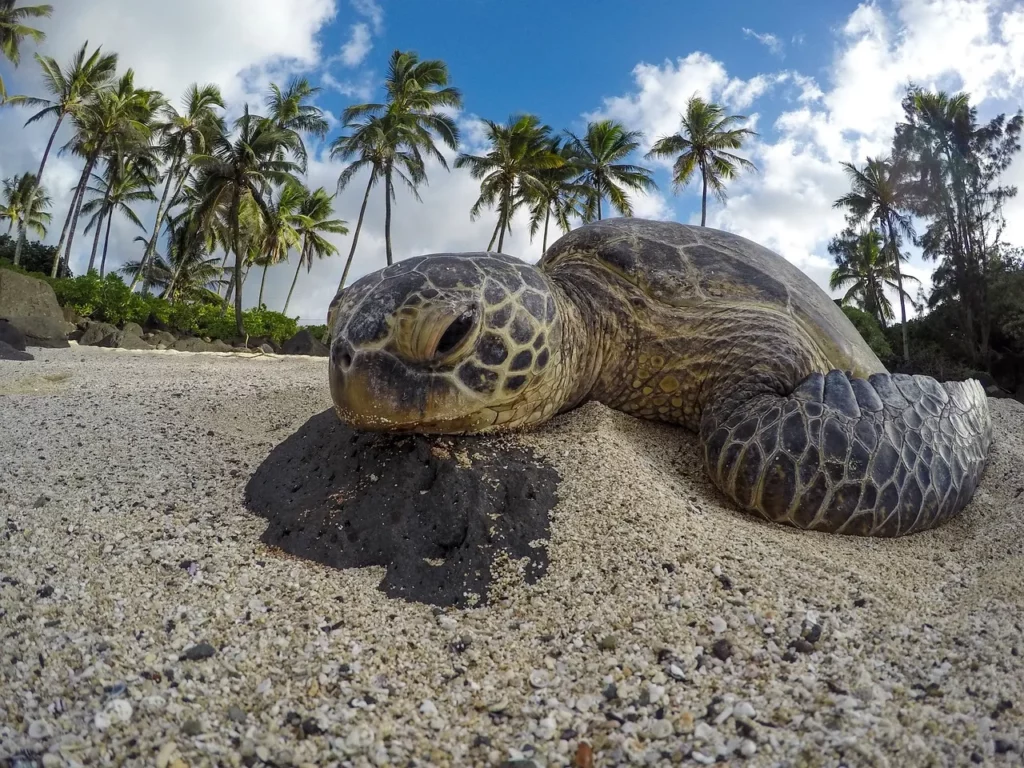
Holbox Island is an important nesting site for several species of sea turtles, most notably the loggerhead and green turtles. These magnificent creatures come ashore to lay their eggs during specific months of the year. Here’s a more detailed overview:
Species and Timing:
- Loggerhead Turtles: These turtles typically nest on Holbox Island from May to August. Loggerhead turtles are known for their large size and powerful jaws.
- Green Turtles: Green turtles, known for their herbivorous diet, usually nest on the island from June to September.
Nesting Process: When female turtles reach maturity, they return to the beaches where they were born to lay their eggs. They dig nests in the sand and deposit their eggs, covering them up before returning to the ocean. The eggs incubate in the warm sand for about 45 to 70 days, depending on the species and environmental conditions.
Hatching and Release: After the incubation period, the tiny hatchlings emerge from the sand and instinctively make their way to the ocean, guided by the natural light of the moon and stars reflecting on the water. This is a critical and vulnerable time for the hatchlings, as they are exposed to predators both on the beach and in the water.
Conservation Efforts: Holbox Island’s community and local authorities are actively involved in sea turtle conservation efforts. Measures are taken to protect nesting sites and monitor hatchling success rates. Conservationists often mark and protect nests to prevent accidental disturbance and predation.
Tourism and Awareness: Holbox’s sea turtle nesting phenomenon has also attracted responsible tourism. Some local tour operators offer guided tours during the nesting and hatching seasons. These tours aim to raise awareness about sea turtle conservation and provide visitors with the opportunity to witness these incredible events while minimizing disturbance to the turtles and their habitats.
Responsible Tourism Tips: If you’re interested in observing sea turtle nesting and hatching on Holbox Island, it’s crucial to prioritize responsible and ethical practices. Follow guidelines provided by tour operators and local authorities, maintain a respectful distance from nesting turtles and hatchlings, avoid using flash photography, and refrain from disturbing the nesting sites.
Crowds and prices
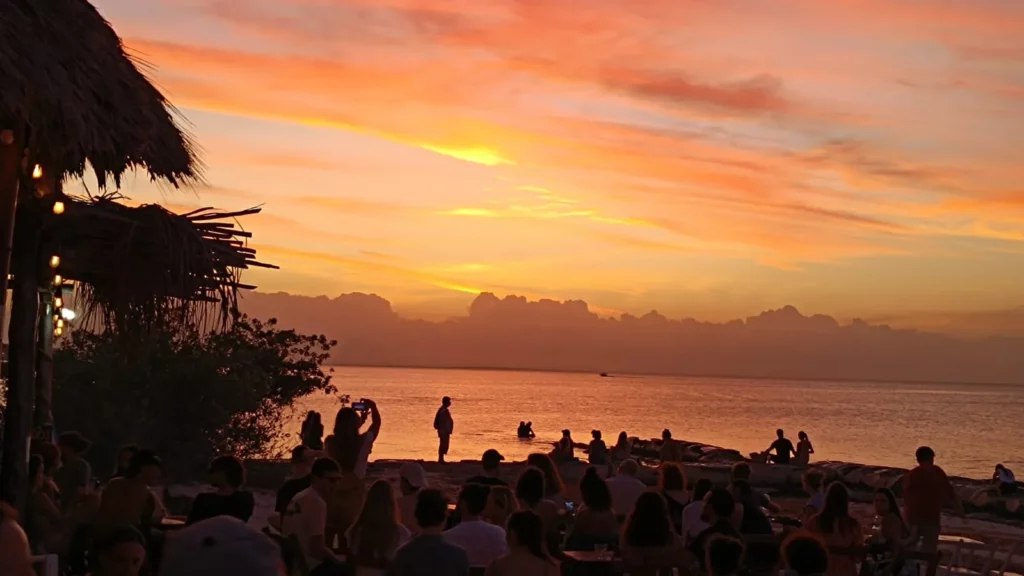
The level of crowds and the pricing of accommodations and activities on Holbox Island can vary significantly depending on the time of year. Understanding these fluctuations can help you plan your visit according to your preferences and budget:
High Season (December to February)
Crowds: This period experiences the highest number of tourists on the island. The pleasant weather in the northern hemisphere’s winter months attracts visitors seeking a warm escape. Expect larger crowds at popular attractions, beaches, and restaurants.
Prices: Due to the high demand, prices for accommodations, tours, and activities tend to be at their peak during this season. It’s advisable to book well in advance to secure preferred lodging options. Keep in mind that availability might be limited, and you might need to pay a premium for popular choices.
Shoulder Season (March to April and November)
Crowds: During these months, the crowds are generally more manageable compared to the peak winter season. You can expect a more balanced atmosphere with fewer tourists.
Prices: Prices for accommodations and activities might be slightly lower compared to the high season. Booking in advance is still recommended, especially if you have specific preferences, but you might find more availability and some promotions.
Low Season (May to October)
Crowds: The low season experiences fewer tourists due to factors like the potential for rain and hurricanes. While you won’t find the bustling atmosphere of the high season, you’ll likely enjoy a quieter and more relaxed environment.
Prices: Accommodation and activity prices tend to be lower during the low season. Many businesses offer discounts and special deals to attract visitors during this period. It’s worth considering if you’re looking for a budget-friendly trip.
Rainy Season Considerations
Crowds: The rainy season (May to October) is often characterized by lower tourist numbers due to concerns about the weather. Some tourists may be deterred by the possibility of rain and storms.
Prices: As mentioned, prices are generally lower during this time. If you’re willing to take the chance with the weather, you can enjoy more affordable rates on accommodations and activities.
Balancing Crowds and Budget: It’s essential to strike a balance between your desire for a vibrant atmosphere and your budget constraints. If you prefer a lively atmosphere with more people and are willing to pay a premium, the high season might be suitable. On the other hand, if you value a more peaceful experience and want to save on costs, the low season could be more appealing.
Conclusion
Holbox Island’s allure is timeless, inviting travelers to immerse themselves in its natural wonders and cultural riches. Whether you’re drawn to the island’s vibrant marine life, captivating festivals, or simply the prospect of unwinding on its serene shores, there’s a season that perfectly suits your desires. By carefully considering the distinct offerings of each season, you can make an informed decision and embark on a journey that will undoubtedly leave you with cherished memories of this Caribbean paradise.
